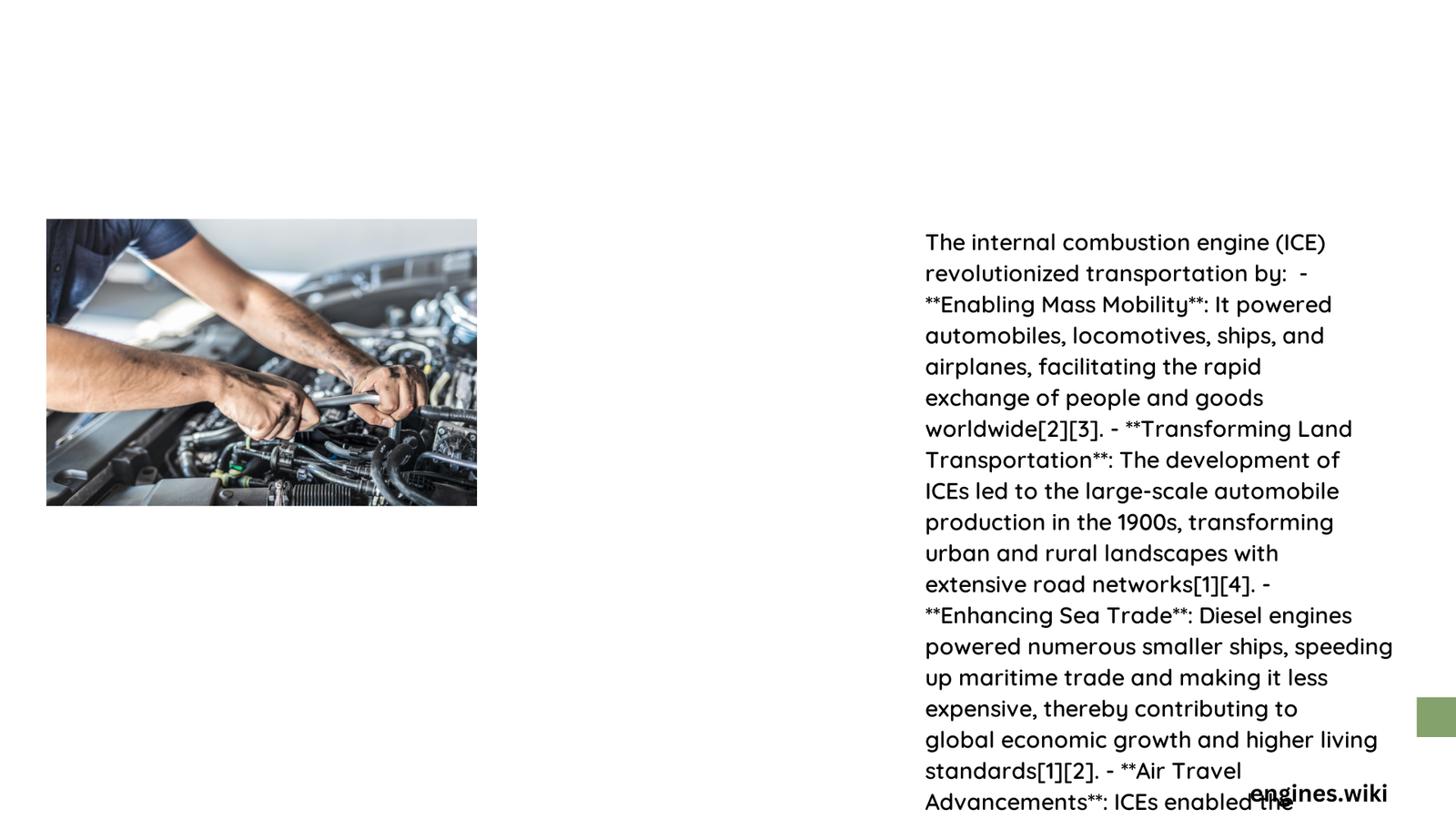The internal combustion engine (ICE) fundamentally transformed transportation by dramatically increasing mobility, reducing travel times, and enabling unprecedented economic growth. Its introduction revolutionized how humans and goods move across distances, creating a paradigm shift from animal-powered and steam-based transportation to mechanized, efficient travel systems that reshaped global infrastructure and economic landscapes.
How Did the Internal Combustion Engine Transform Freight Transport?
Quantitative Improvements in Freight Efficiency
Before the ICE, freight transport relied on horses, wagons, and steam engines with significant limitations. The introduction of ICE-powered trucks created remarkable changes:
| Transport Method | Load Capacity | Average Speed | Efficiency |
|---|---|---|---|
| Horse-Drawn Wagon | 1-2 tons | 5-10 mph | Low |
| Early ICE Trucks | 5-10 tons | 20-30 mph | Moderate |
| Modern Diesel Trucks | 40+ tons | 55-65 mph | High |
Key Efficiency Metrics
- Load Capacity Increase: From 1-2 tons to over 40 tons
- Fuel Consumption Reduction: Improved from 1-2 miles per gallon equivalent to 5-7 miles per gallon
- Cost Per Mile: Significantly decreased transportation expenses
How Did Personal Mobility Change?
The ICE transformed personal transportation through several critical developments:
- Speed Revolution
- Pre-ICE average speeds: 5-10 mph
- Early ICE vehicle speeds: 20-40 mph
-
Modern vehicle speeds: 60-75 mph
-
Vehicle Diversity
- Introduction of multiple vehicle types
- Customized transportation solutions
-
Increased personal mobility options
-
Ownership Transformation
- U.S. vehicle ownership:
- Early 1900s: Near-zero ownership
- Early 21st century: 250+ million registered vehicles
What Economic Impacts Emerged from Transportation Transformation?

Long-Distance Travel Efficiency
The ICE dramatically reduced travel times between major cities:
– New York to Los Angeles
* Horse-drawn carriage: Several months
* Early ICE vehicles: 4-5 days
* Modern vehicles: 2-3 days
Urban and Economic Development
The internal combustion engine catalyzed unprecedented economic growth by:
– Enabling faster goods transportation
– Reducing logistical constraints
– Supporting suburban expansion
– Creating new industrial ecosystems
What Technological Advancements Resulted?
Fuel Economy Evolution
- Early ICE vehicles: 10-20 miles per gallon
- Late 20th-century vehicles: 20-30 miles per gallon
- Modern vehicles: 30-40 miles per gallon
Infrastructure Development
- Interstate highway systems
- Advanced road networks
- Integrated transportation ecosystems
Conclusion
The internal combustion engine didn’t just change transportation; it reimagined human mobility, economic potential, and societal connectivity. Its impact transcends mere technological innovation, representing a fundamental restructuring of how humans interact with distance and time.
